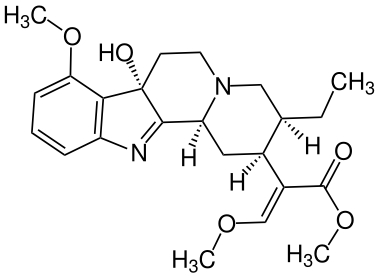Whereas kratom’s most abundant alkaloid is mitragynine, 7-hydroxymitragynine (which is also known as 7-HMG or 7-OHM) is one of the alkaloids that arise more questions. While the latter is less abundant by far, its importance in kratom’s effects is key. But what is 7-hydroxymitragynine? In this post, we will explore the chemistry, properties, and other facts about this alkaloid.
Origin of Kratom
Kratom is a natural product that is gaining a lot of popularity thanks to its multiple effects. Thousands of people use this herb to relieve pain, relieve the symptoms of anxiety and depression, boost their energy or even to manage opiate withdrawal. But what is kratom? And how does it work?

The botanical name of kratom is Mitragyna speciosa and is a tree that grows wild in the humid jungle of Southeast Asia. Kratom is native to Thailand, Indonesia, Malaysia or The Philippines. For centuries, the native population of these regions chewed kratom’s fresh leaves in order to get an energy boost or to combat pain.
Over the last few years, kratom has also become popular in the Western world. The dried leaves of Mitragyna speciosa are imported from Indonesia or Malaysia and people use them to alleviate different ailments and conditions.
Kratom Alkaloids and How They Work
Before dealing with what 7-hydroxymitragynine is, let us talk about kratom alkaloids first. The leaves of kratom get their properties and effects thanks to their alkaloids. But what is an alkaloid? An alkaloid is a nitrogenous organic element of a plant that has physiological effects on humans and other animals. In the case of kratom, it contains more than 20 alkaloids, plus other active compounds.
The alkaloid content of a kratom leaf ranges between 0.5 and 1.5 percent. Between 12 and 66% of this content is mitragynine. However, 7-hydroxymitragynine is present in very low amounts, only 2% of the alkaloid content.
Kratom’s alkaloids act on the kappa, delta, and mu receptors in your body. The activation of these receptors reduces pain, produces euphoria, relieves stress, and increases the energy levels. So, this means that kratom is effective in:
- Reducing pain
- Relieving anxiety and depression
- Fighting insomnia
- Improving mood and promoting euphoria
- Getting an energy boost
What Is 7-Hydroxymitragynine?
7-hydroxymitragynine is an oxidized form of mitragynine. Its molecular formula is C23H30N2O5 and its molecular weight is 414.502 grams per mole. Due to the low contents of 7-HMG that kratom contains, this alkaloid was not identified until 1993. On the other hand, mitragynine was first isolated back in 1921.

But despite being present is so low amounts, 7-hydroxymitragynine plays a key role in kratom’s effectiveness. 7-OHM is by far the most potent kratom alkaloid. In fact, its analgesic effects are 13 times higher than morphine and 46 times higher than mitragynine. Therefore, the importance of 7-HMG in kratom’s effects is very high, even if its content is quite low. And even though its presence in the leaf is not high, mitragynine might turn into 7-OHM during metabolism.
Actually, the opioid-like effects of Mitragyna speciosa may probably be the result of the action of 7-hydroxymitragynine on the kappa, delta, and mu receptors. But other than being a potent analgesic, 7-hydroxymitragynine also has antidiarrheal effects. Since mitragynine also has this effect, it is no wonder that many users experience constipation when consuming kratom.
Is 7-Hydroxymitragynine Dangerous?
Thanks to the efforts of the American Kratom Association and other kratom advocates, some states have passed the Kratom Consumer Protection Act. The aim of these bills is to protect consumers from adulterated kratom and their potential risks, as well as to make sure that kratom consumers receive all the information about the products they are purchasing.
These bills often include specific references to the amount of 7-hydroxymitragynine that the kratom product shall content. In fact, they usually prohibit products with 7-HMG content higher than 2%. But does this mean that 7-hydroxymitragynine is dangerous? At the normal levels that natural kratom leaves contain, 7-OHM should not involve any danger. However, higher doses might have opiate-like effects that could potentially involve some risks. You must not forget that 7-hydroxymitragynine is even more potent than morphine. Therefore, you should avoid products that are not properly labeled or that have extra 7-OHM.
How to Consume Kratom Safely
The best way to avoid 7-hydroxymitragynine and kratom’s side effects is to be cautious with your dosage. At high doses, kratom can turn out even sedative. But also, other unpleasant side effects, such as nausea, stomachache or eye wobbles, could arise.
By avoiding high doses, you are reducing the risks of experiencing these side effects. But what is a high dosage of kratom? While the answer may vary depending on the user, doses higher than 5 grams are regarded as high, especially if you are not a “kratom expert”. Also, dosages higher than 8 grams is very high and you should avoid them.



